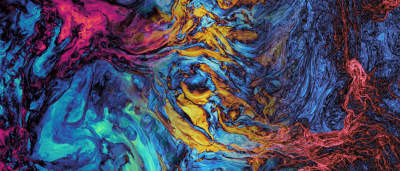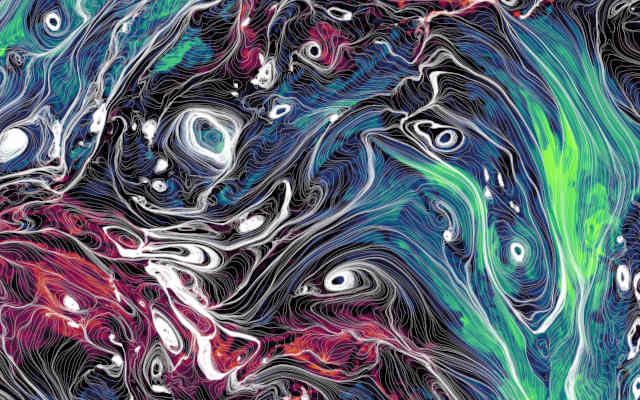Newsroom


World’s largest simulation of magnetized turbulence reveals major deviations from canonical models.
Groundbreaking simulations led by an international team of researchers, including STRUCTURES member Ralf Klessen (Centre for Astronomy Heidelberg, ZAH, and Interdisciplinary Center for Scientific Computing, IWR) have unveiled previously unknown details about turbulence in the magnetized environment of the interstellar medium (ISM). This complex, turbulent plasma, composed of hot, electrically charged gas and dust between the stars in our galaxy, profoundly influences fundamental cosmic processes such as star formation and cosmic-ray transport. Unlike everyday turbulence, the interstellar medium's plasma is magnetized, making it particularly difficult to observe and model.
The new study, published in Nature Astronomy, utilized simulations with unprecedented grid resolutions to model highly compressible, magnetized turbulence akin to that occurring in the ISM. “This is the first time we can study these phenomena at this level of precision and at these different scales,” says James R. Beattie, the first author of the study. A key finding is the discovery of two distinct, coexisting kinetic energy cascades within the turbulence – a process where kinetic energy flows from large to small scales within the turbulent ISM. The interstellar medium can be envisioned as a fluid with swirling motions of various sizes, powered by energy often injected on large scales (e.g., from exploding stars). According to the new simulations, this energy transfer happens in two separate ways depending on the scale of these motions. On the largest scales, where gas is moving faster than sound (supersonic) and magnetic fields are relatively weak, the energy transfer is more direct and can “jump” across different sizes of swirls. However, on smaller scales, where gas moves slower than sound (subsonic) and is strongly influenced by magnetic fields woven in the ISM, energy flows more gradually down through successive scales. This two-level process of energy dissipation is a significant departure from simpler, older models of turbulence. The team also discovered that energy stored in the magnetic energy itself has its own unique way of cascading through these turbulent regions, following a pattern that current theories do not fully explain.
These findings challenge fundamental theories of magnetohydrodynamic (MHD) turbulence and provide crucial insights into the properties of the ISM. In particular, they help to explain how turbulence affects the initial conditions for star formation. Whereas the coupling of turbulence and magnetic fields enhances filamentary structures along which stars preferentially form, the strong magnetic influence on smaller scales acts like a form of pressure that can help support gas clouds against gravitational collapse – suppressing the rate of star formation at the same time. The simulations used over 80 million CPU hours on nearly 140,000 cores of the SuperMUC-NG supercomputer at the Leibniz Supercomputing Centre.
Further information:
- Original Publication: Beattie, J.R., Federrath, C., Klessen, R.S. et al. The spectrum of magnetized turbulence in the interstellar medium. Nat Astron, 2025 (Link to Nature Astronomy)
- Research homepage of Prof. Ralf Klessen
